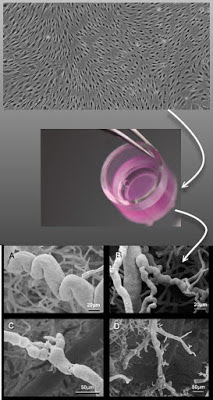i-Fect Used to Study Impacts
Our
i-Fect siRNA, miRNA and shRNA Trasfection Kit was recently used to study the impact of G9a-specific siRNA
(AGUAACGGGCAUCAAUGC) on Mu Opioid Receptors:
Yuhao Zhang, Shao-Rui Chen, Geoffroy Laumet, Hong Chen and Hui-Lin Pan. Nerve Injury Diminishes Opioid Analgesia through Lysine Methyltransferase-Mediated Transcriptional Repression of µ-Opioid Receptors in Primary Sensory Neurons. First Published on February 25, 2016, doi: 10.1074/jbc.M115.711812... In some SNL rats, G9a-specific siRNA (4 µg) or the negative control siRNA was administered intrathecally. G9a-specific siRNA(AGUAACGGGCAUCAAUGC) or universal negative control siRNA (#SIC001, Sigma-Aldrich) was mixed with i-Fect (Neuromics, Edina, MN) to a final concentration of 400 mg/L for the intrathecal injections...

Figures: G9a knockdown with siRNA reverses the MOR expression in the DRG and the morphine analgesic
effect diminished by nerve injury. (A,B) Quantitative PCR (A) and Western blotting (B) analyses show the mRNA
and protein levels of MORs in the DRGs of sham and SNL rats treated with control or G9a-specific siRNA (n = 10
rats in each group). The ipsilateral L5 and L6 DRG tissues were removed 24 h after the last siRNA injection. The
amount of MOR mRNA and protein was normalized to GAPDH in the same samples, and the mean value of MOR
levels in sham control rats was considered to be 1. (C) Time course of the intrathecal morphine effects on the tactile
and pressure withdrawal thresholds in sham and SNL rats treated with G9a-specific siRNA or negative control
siRNA (n = 9 rats in each group). The withdrawal thresholds after the last siRNA injection were plotted as the
baseline control (BL).
Summary: The findings provide new insight
into the epigenetic mechanism regulating MOR
expression in primary sensory neurons in neuropathic
pain. This multidisciplinary approach provides
conclusive evidence for G9a as a key chromatin
regulator responsible for MOR downregulation in the
DRG and the analgesic efficacy of opioids reduced by
nerve injury. A better understanding of the epigenetic
mechanisms underlying nerve injury-induced
downregulation of MORs in primary sensory neurons
could help improve the analgesic efficacy of opioids for
treating chronic neuropathic pain. G9a inhibitors could
be used to enhance the opioid analgesic effect and
reduce opioid consumption in patients with chronic
neuropathic pain.









